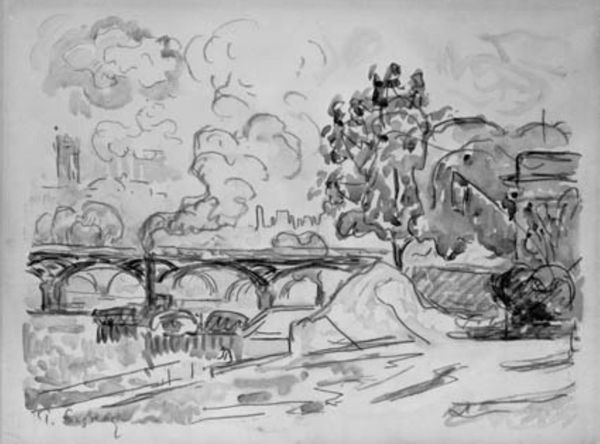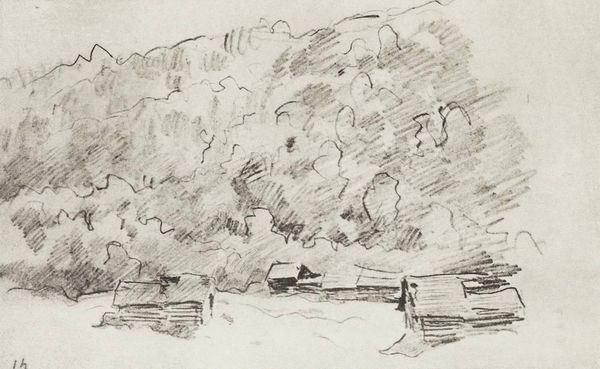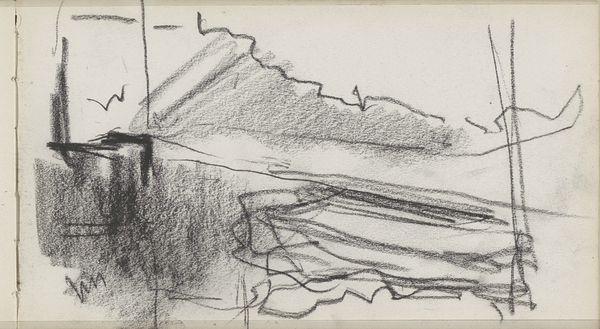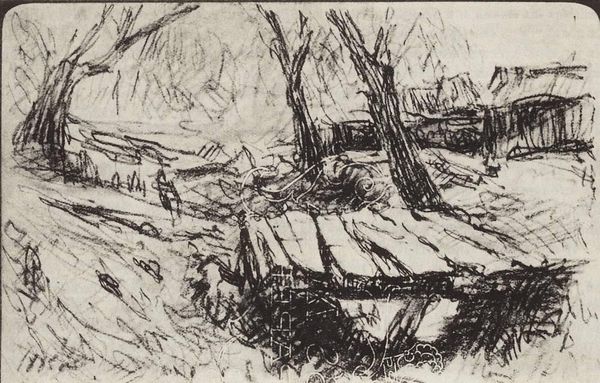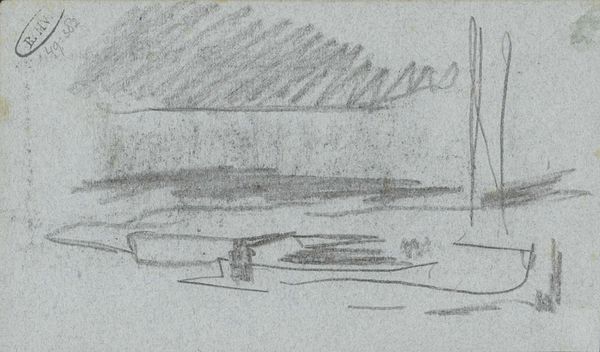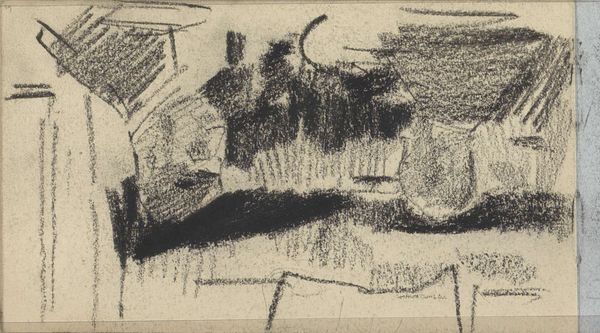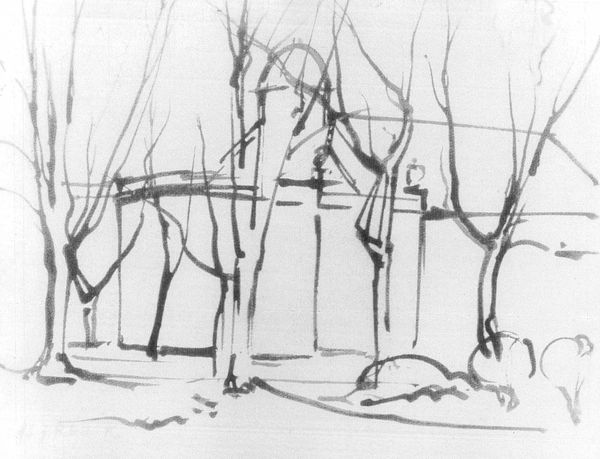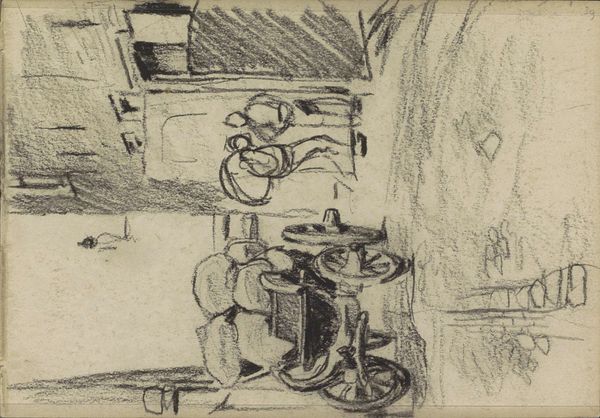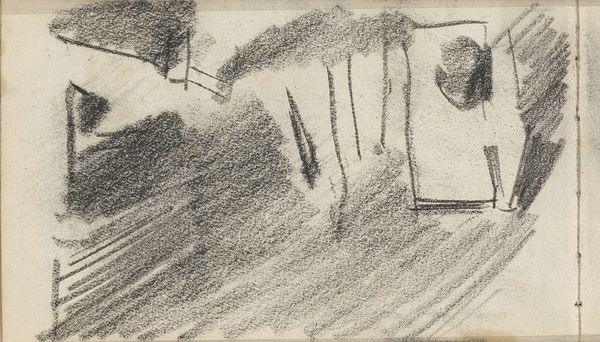
Abramtsevo. The bridge. Drawing for the painting 'Bridge in Abramtsevo'. 1911
0:00
0:00
Dimensions: 35 x 44.8 cm
Copyright: Public domain US
Editor: This pencil drawing, "Abramtsevo. The bridge," created in 1911 by Pyotr Konchalovsky, is so interesting in its textures. It almost looks unfinished but not in a bad way. I wonder about its role. How do you interpret this work, given its historical context? Curator: Considering it's a preparatory drawing for a painting, its "unfinished" quality speaks volumes about the artistic process at the time. Abramtsevo was an artist colony, fostering experimentation. The roughness could be read as a deliberate act, pushing against the strict academic traditions still lingering in the early 20th century, don't you think? Editor: That makes sense! A rebellion against the established order, visualized through art. It also feels like the work is romanticizing rural Russia, similar to the earlier Realist painters but with a fresh technique. Curator: Precisely! Abramtsevo had this powerful mythology around it; as a space it signified a reconnection with national identity at a time when Russia was hurtling towards revolution. This idealized depiction through drawing reinforces that curated narrative. Consider how the sketch's simplicity also speaks to the purity associated with rural life versus industrial progress. Editor: So, it’s less a literal depiction and more of a symbol. That reframes how I see it! It also seems to underscore the complex political climate that was present during this time. Curator: Exactly. Art rarely exists in a vacuum, does it? Think about who was supporting Konchalovsky, what his artistic circles valued. These "simple" landscape sketches contributed to a larger cultural discourse about Russian identity and the role of art within it. What have you noticed now that is new to you? Editor: It gives the impression of being simultaneously timeless and very much of its time, as if to underline how Russians longed for "the good old days." I think the pencil work, and quick and expressive lines really amplify its power. Thank you. Curator: My pleasure. Examining the social and political currents that shape art always gives us a deeper appreciation for it.
Comments
No comments
Be the first to comment and join the conversation on the ultimate creative platform.
